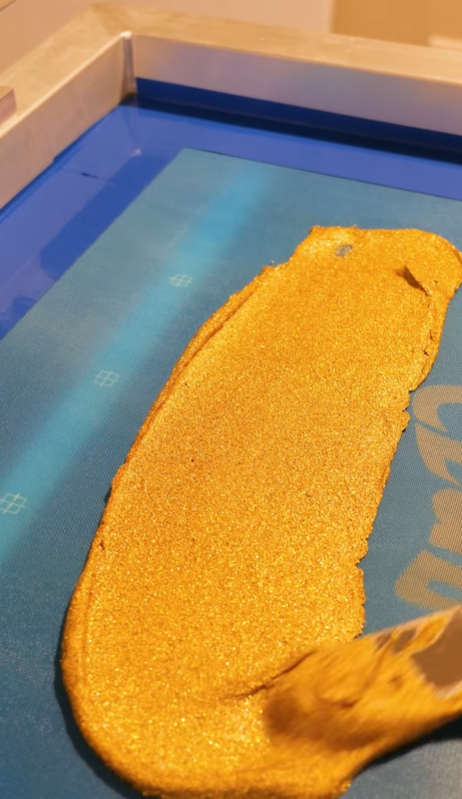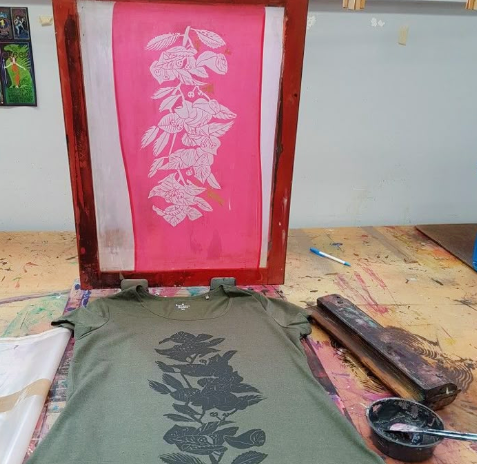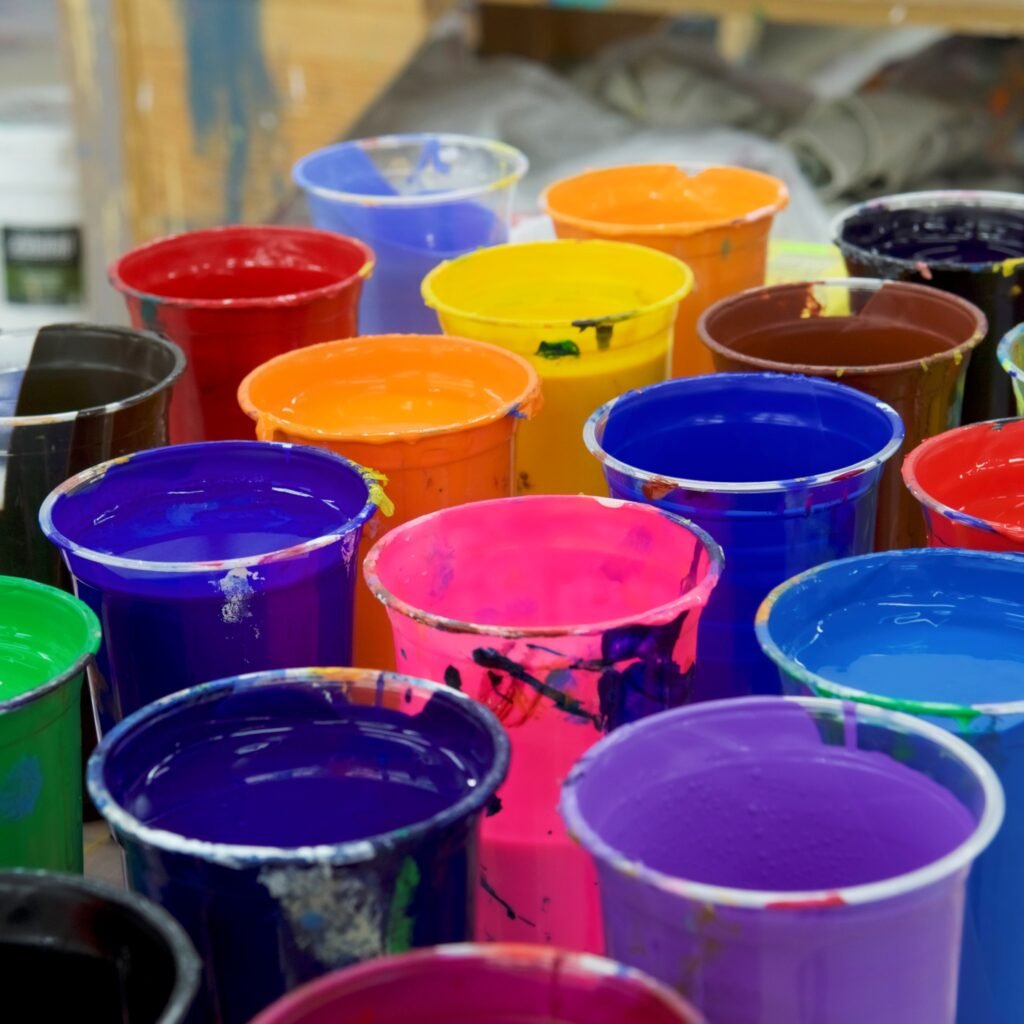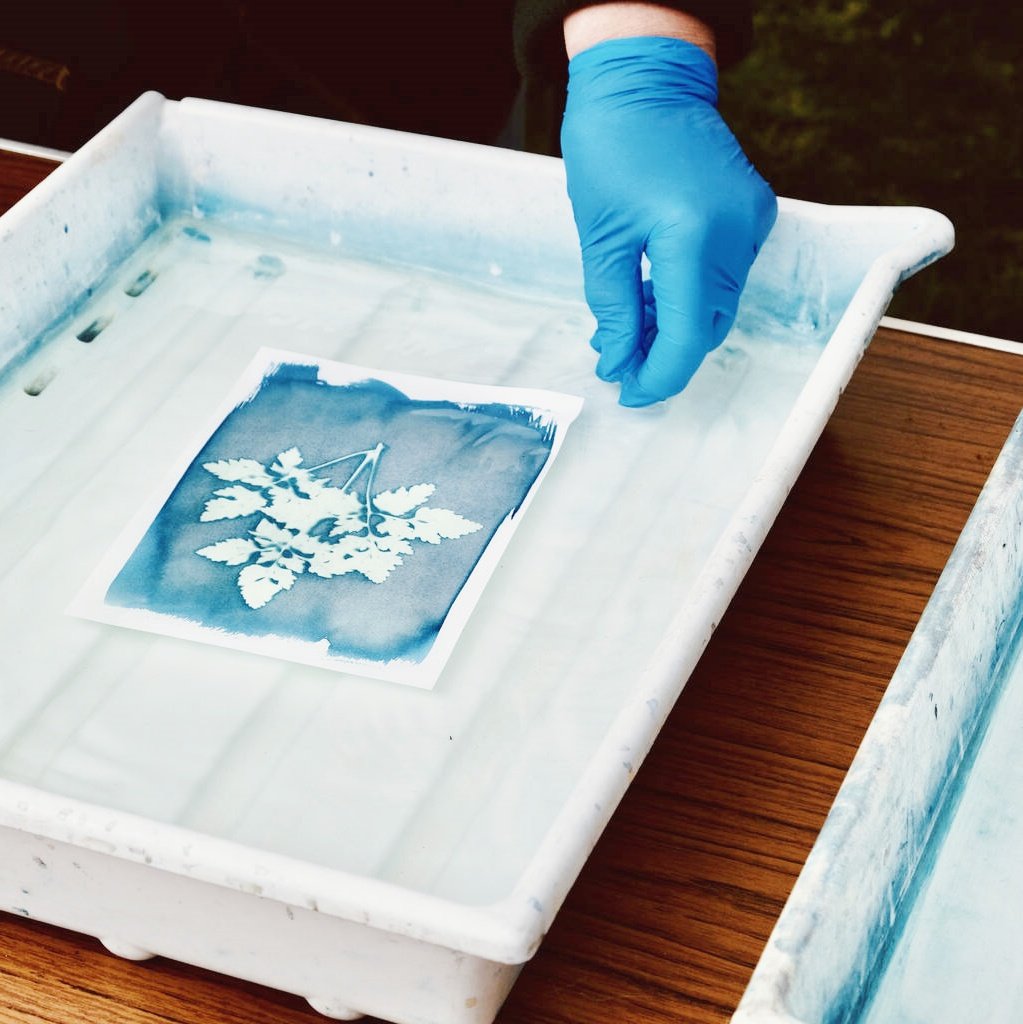Inhaltsverzeichnis
Plastisol-Tinte ist für ihre Haltbarkeit und leuchtenden Farben im Textildruck bekannt
Plastisol-Tinte vs. Tinte auf Wasserbasis ist eine großartige Alternative in der Druckindustrie: Welche ist für den Siebdruck am besten geeignet? Die Verwendung umweltfreundlicher Tinten kann sich positiv auf die Umwelt und die Druckindustrie auswirken.
Dieser Artikel hilft Ihnen, mehr zu erfahren über Plastisol vs. Tinte auf Wasserbasis im Siebdruck. Wir verwenden einfache Wörter. Wir verwenden Listen und Tabellen. Sie sehen Daten und Fakten. Wir hoffen, dieser Leitfaden hilft Ihnen bei der Auswahl der beste Siebdruckfarbe für Ihre Bedürfnisse.
Dieser Leitfaden hat einfache Wörter und Listen löschenWir fügen ein Datentabelle mit Fakten und Zahlen. Sie erfahren über umweltfreundliche Tinte, Die Aushärtungsprozess, Und PVC-frei Optionen. Wir sprechen auch über Marken wie Wilflex bietet eine Reihe von Produkten an, die sowohl für Tinten auf Wasserbasis als auch für Plastisoltinten geeignet sind. ist in der Druckindustrie eine beliebte Wahl für die Herstellung hochwertiger Drucke auf verschiedenen Kleidungsstücken. und MatsuiWir erwähnen Regeln wie Öko-Tex und Ideen von ZDHC und GOTS.
Lasst uns beginnen!
1. Einleitung
Beim Siebdruck gibt es viele Tintenoptionen. Zwei Haupttinten sind Plastisol-Tinte und Tinte auf Wasserbasis. Jede Tinte hat ihre eigenen Vor- und Nachteile. Sie können mit Baumwolle oder PolyesterSie können Sportbekleidung oder umweltfreundliche Kleidung bedrucken. Dieser Leitfaden zeigt Ihnen die beste Tinte für Ihre Bedürfnisse.
- Plastisol-Tinte besteht aus PVC und Weichmachern. Es ist dick und benötigt zum Trocknen Wärme.
- Tinte auf Wasserbasis wird mit Wasser hergestellt. Es zieht in den Stoff ein und fühlt sich weich an.
Viele Siebdrucker wählen Plastisol-Tinte für Benutzerfreundlichkeit und leuchtende Farben. Andere wählen Tinte auf Wasserbasis Um die Umwelt zu schonen, sollten Sie beim Drucken umweltfreundliche Additive verwenden. Wir vergleichen beide Tinten.

2. Ein kurzer Blick: Vergleichstabelle
Nachfolgend finden Sie eine Tabelle mit den wichtigsten Fakten zu jeder Tinte:
| Die Tintenkategorie umfasst sowohl wasserbasierte als auch Plastisol-Tinten für verschiedene Anwendungen. | Plastisol-Tinte | Tinte auf Wasserbasis |
|---|---|---|
| Marktnutzung | 65% der Drucker nutzen es für seine Haltbarkeit und Benutzerfreundlichkeit. | 28% nutzen es, und es wächst jedes Jahr um 12% umweltfreundlich. |
| Auswirkungen auf die Umwelt | Enthält PVC und Phthalate. Beim Aushärten entstehen 3,2 kg CO₂ pro 1 kg Tinte. | 80% geringerer CO2-Fußabdruck. Es ist biologisch abbaubar wenn es APEO-frei ist. |
| Bei der Auswahl von Tinten für Sportbekleidung ist die Haltbarkeit entscheidend. | Hält über 50 Wäschen und behält leuchtende Farben. | Hält 30–50 Wäschen. Farben können ohne Vorbehandlung verblassen. |
| Komfort (Handgefühl) | Fühlt sich dick und gummiartig an. Bewertung 2,8/5 für Weichheit. | Fühlt sich weich und leicht an. Bewertung 4,5/5 für Weichheit. |
| Opazität auf dunklen Stoffen | Verleiht 95% Deckkraft ohne zusätzlichen Aufwand. | Benötigt zusätzliche Schichten für die Deckkraft von 70%. |
| Kosten | Kosten: $20–$50 pro kg. Es ist günstig für den Anfang. | Die Kosten betragen $30–$70 pro kg und erfordern möglicherweise spezielle Trockner wie einen Förderbandtrockner. |
| Einhaltung | 40% erfüllt nicht die REACH-Vorschriften der EU. | 90% treffen Öko-Tex Standard 100. |
| Mikroplastik | Gibt 1.900 winzige Fasern pro Waschgang frei, insbesondere bei Polyestermischungen. | Gibt fast kein Mikroplastik frei, sehr sicher für die Natur. |
| Trocknen/Aushärten | Benötigt Hitze bei 320 °F für 60–90 Sekunden. | In 15–30 Minuten an der Luft trocknen oder 2–3 Minuten bei 250 °F aushärten. |
| Fallstudie | A Sportbekleidungsmarke mit Plastisol 25% an Tintenkosten gespart. | Ein Öko-Bekleidungsunternehmen Senkung der Abfallkosten um 40% mit wasserbasierter Tinte. |
3. Was ist Plastisol-Tinte?
Plastisol-Tinte ist eine klassische Siebdruckfarbe. Sie verwendet PVC und Weichmacher. Hier die wichtigsten Punkte:
- Dick und zähflüssig: Es bleibt dick, bis es durch Hitze ausgehärtet wird.
- Hohe Opazität: Es erzeugt helle und kräftige Farben, sogar auf dunklen Stoffen.
- Einfach zu verwenden: Es verzeiht kleine Fehler. Daher ist es gut für Anfänger geeignet.
- Lebendige Farben: Sie erhalten leuchtende Farben und können sogar Spezialeffekte wie Glitzer hinzufügen.
- Dauerhaftigkeit: Es hält über 50 Wäschen. Es verblasst nicht schnell.
Es gibt jedoch einige Nachteile:
- Gummiartiges Gefühl: Das gedruckte Design kann sich dick und steif anfühlen.
- Nicht umweltfreundlich: Es enthält PVC und Phthalate. Das ist ein Problem für die Erde.
- Hohe Aushärtungstemperatur: Beim Plastisoldruck ist eine hohe Hitze (160 °C) für 60–90 Sekunden erforderlich. Dies kann sehr energieintensiv sein.
Plastisol-Tinte eignet sich gut für Sportbekleidung. Es funktioniert am besten auf dunklen Stoffen und wenn Sie helle, kräftige Drucke wünschen. Viele Drucker wie Marken wie Wilflex und Matsui für diese Tinte.
4. Was ist Tinte auf Wasserbasis?
Tinte auf Wasserbasis ist eine neuere Tintenart. Sie verwendet hauptsächlich Wasser als Träger. Diese Tinte hat viele Vorteile:
- Weiches Gefühl: Es zieht in den Stoff ein. Der Druck fühlt sich leicht an und ist fast nicht zu spüren.
- Umweltfreundlich: Es ist biologisch abbaubarEs ist auch PVC-frei und arm an schädlichen Chemikalien.
- Atmungsaktiv: Die Tinte lässt den Stoff atmen. Das ist gut für Kleidung wie Babykleidung und Kleidung aus Bio-Baumwolle.
- Glatte Optik: Es verleiht dem Druck einen weicheren Vintage-Look.
Aber es gibt einige Herausforderungen:
- Längere Trocknungszeit: Das Trocknen an der Luft dauert 15–30 Minuten.
- Geringere Opazität: Bei dunklen Stoffen sind möglicherweise zusätzliche Schichten und eine Vorbehandlung erforderlich.
- Erforderliche Fähigkeiten: Bei unsachgemäßer Anwendung kann es Siebe verstopfen. Der Umgang damit erfordert mehr Geschick.
Für diejenigen, denen die Erde am Herzen liegt, Tinte auf Wasserbasis ist die Wahl. Es ist beliebt bei Öko-Marken, die verwenden Bio-Baumwolle und andere Naturstoffe. Es erfüllt auch Regeln wie Öko-Tex Standard 100 und ZDHC Richtlinien.

5. Direkter Vergleich
Hier vergleichen wir Plastisol vs. Tinte auf Wasserbasis nebeneinander. So können Sie erkennen, was Ihnen am wichtigsten ist.
A. Haltbarkeit und Waschbarkeit
- Plastisol-Tinte
- Hält über 50 Wäschen.
- Die Farben verblassen nicht so leicht.
- Am besten für intensive Nutzung.
- Tinte auf Wasserbasis
- Hält 30–50 Wäschen.
- Wenn die Tinte nicht vorbehandelt wird, können die Farben verblassen.
B. Komfort und Gefühl
- Plastisol-Tinte
- Verleiht ein dickes, gummiartiges Gefühl.
- Kann sich auf Baumwolle schwer anfühlen.
- Tinte auf Wasserbasis
- Fühlt sich weich und leicht an.
- Verleiht dem Stoff ein natürliches Gefühl.
C. Umweltauswirkungen
- Plastisol-Tinte
- Enthält PVC und Phthalate.
- Setzt Mikroplastik frei und verursacht hohe Kohlenstoffemissionen.
- Tinte auf Wasserbasis
- Ist umweltfreundlich.
- Hat einen geringen CO2-Fußabdruck und ist nahezu frei von Mikroplastik.
D. Kostenanalyse
- Plastisol-Tinte
- Kostet weniger, $20–$50 pro kg.
- Niedrigere Tintenkosten, aber es wird mehr Energie zum Aushärten benötigt.
- Tinte auf Wasserbasis
- Kosten $30–$70 pro kg.
- Manchmal muss man spezielle Trockner kaufen.
E. Beste Anwendungsfälle
- Plastisol-Tinte
- Ideal für auffällige Sportbekleidung.
- Gut für dunkle Stoffe.
- Wird bei Großbestellungen verwendet.
- Tinte auf Wasserbasis
- Am besten für umweltfreundliche Marken.
- Passt zu Bio-Baumwolle und Babykleidung.
- Ideal für leichte Stoffe und Freizeitkleidung.
6. Entscheidungsfaktoren: So wählen Sie
Denken Sie bei der Auswahl der Tinte an Folgendes 5 Punkte, die Sie bei der Auswahl der Tinten für Ihre Textildruckprojekte beachten sollten.:
- Stoff Typ:
- Dunkle Stoffe eignen sich besser für Plastisol-Tinte.
- Leichte Stoffe und Bio-Baumwolle eignen sich am besten für Tinte auf Wasserbasis.
- Langlebigkeit des Drucks:
- Wenn Sie Drucke benötigen, die viele Wäschen überdauern, Plastisol-Tinte ist die Wahl.
- Wenn Weichheit der Schlüssel ist, versuchen Sie Tinte auf Wasserbasis.
- Budget:
- Plastisol-Tinte ist im Voraus günstiger.
- Tinte auf Wasserbasis kostet zwar mehr, spart aber mit der Zeit Abfall und Energiekosten.
- Fähigkeitsstufe:
- Plastisol-Tinte funktioniert gut für Anfänger.
- Tinte auf Wasserbasis eignet sich für diejenigen, die mehr Erfahrung haben.
- Umweltvorschriften:
- Kennen Sie die Regeln für Ihren Markt.
- Tinte auf Wasserbasis trifft Öko-Tex Standard 100 und ZDHC.
- Diese sind für umweltfreundliche Marken von entscheidender Bedeutung.
7. Häufige Fehler, die Sie vermeiden sollten
Hier sind einige Listen von Fehlern, die Sie nicht machen dürfen:
- Für Plastisol-Tinte:
- Verwenden Sie es nicht für Babykleidung. Es enthält schädliche Chemikalien.
- Nicht zu lange aushärten. Dies kann zu Rissen im Druck führen.
- Ignorieren Sie nicht die hohen Energiekosten.
- Für Tinte auf Wasserbasis:
- Verzichten Sie bei dunklen Textilien nicht auf die Vorbehandlung.
- Lassen Sie die Tinte nicht zu lange auf Ihrem Bildschirm trocknen.
- Verwenden Sie es nicht, wenn Sie es gerade erst lernen; es erfordert mehr Sorgfalt.
Am besten planen Sie Ihre Arbeit und befolgen die Anweisungen für jede Tinte.
8. FAQs
Hier sind einige häufige Fragen die Ihnen bei der Auswahl helfen können:
Kann ich Plastisol und Tinte auf Wasserbasis mischen?
Nein, nicht mischen. Sie funktionieren am besten einzeln. Mischen kann zu schlechten Drucken führen, insbesondere bei Verwendung von deckenden Pigmenten, die sich nicht gut mischen.
Welche Tinte eignet sich für dehnbare Stoffe?
Plastisol-Tinte funktioniert gut bei dehnbarer Sportbekleidung.
Ist Tinte auf Wasserbasis wirklich umweltfreundlich?
Ja, das ist es biologisch abbaubar und erfüllt Regeln wie Öko-Tex Standard 100.
Kann man Bio-Baumwolle mit wasserbasierter Tinte bedrucken?
Ja, Tinte auf Wasserbasis eignet sich am besten für Naturfasern wie Bio-Baumwolle.
9. Fallstudien
Schauen wir uns einige an wahre Geschichten:
- Sportbekleidungs-Markenetui:
Eine Sportbekleidungsmarke verwendet Plastisol-TinteSie sparten 25% an Tintenkosten. Die Ausdrucke waren auch bei starker Beanspruchung gut haltbar. Das zeigt Plastisol-Tinte eignet sich hervorragend für Großbestellungen und dunkle Stoffe. - Fallstudie eines Öko-Bekleidungsunternehmens:
Ein Öko-Bekleidungsunternehmen wechselte zu Tinte auf WasserbasisSie senkten ihre Abfallentsorgungskosten um 40%. Der weiche Druck wurde von ihren Kunden geliebt. Dies zeigt Tinte auf Wasserbasis ist eine gute Wahl für umweltfreundliche Marken.
10. Schlussfolgerung und abschließende Gedanken
Wir haben uns angesehen Plastisol vs. Tinte auf WasserbasisHier sind die wichtigsten Punkte:
- Plastisol-Tinte:
- Vorteile: Leuchtende Farben, hohe Deckkraft, einfach zu verwenden, gut für Sportbekleidung und dunkle Stoffe.
- Nachteile: Dickes Gefühl, hoher Energiebedarf zum Aushärten, nicht umweltfreundlich.
- Tinte auf Wasserbasis:
- Vorteile: Weiche Haptik, umweltfreundlich, natürliches Aussehen, gut für leichte Stoffe und Bio-Baumwolle.
- Nachteile: Längere Trocknungszeit, geringere Deckkraft auf dunklen Stoffen, mehr Geschick erforderlich.
Wie wählen?
Berücksichtigen Sie Stoff, Druckbeständigkeit, Budget, Können und Regeln. Wenn Sie mit Sportbekleidung arbeiten oder auffällige Drucke zu geringen Kosten benötigen, probieren Sie Plastisol-Tinten für den Siebdruck aus. Plastisol-Tinte. Aber wenn Ihnen die Erde am Herzen liegt und Sie einen weichen Druck für Bio-Baumwolle wünschen, wählen Sie Tinte auf Wasserbasis.
Trend-AlarmManche Designer verwenden gerne Hybridtinten. Diese vereinen die Vorteile beider Tintenarten. Sie sind eine gute Wahl, wenn Sie die leuchtende Wirkung beibehalten und gleichzeitig die Umweltbelastung verringern möchten.
Wenn Sie eine Wahl treffen, verwenden Sie die Fakten, die wir in unserer Tabelle gezeigt haben. Wissen Sie, dass Plastisol vs. Tinte auf Wasserbasis geht es nicht nur um Kosten. Es geht um Haltbarkeit, Komfort, Umfeld, Und Benutzerfreundlichkeit.
Befolgen Sie stets die Anweisungen des Siebdruck-Kits. Stellen Sie Ihren Trockner oder Ihr Förderband richtig ein. Reinigen Sie Ihre Werkzeuge gründlich. Diese Pflege hilft Ihnen, beste Siebdruckfarbe zuletzt.
Kurze Zusammenfassung: Wichtige Punkte und Maßnahmen
- Kennen Sie Ihre Tinte:
- Plastisol-Tinte ist dick. Es wird für kräftige und helle Drucke verwendet.
- Tinte auf Wasserbasis fühlt sich weich an. Es ist gut für Naturstoffe und die Erde.
- Daten ansehen:
- Verwenden Sie unsere Tabelle, um Fakten wie Waschbeständigkeit, Kosten und Aushärtezeit zu vergleichen.
- Beachten Sie die Regeln:
- Marken müssen folgen Öko-Tex Standard 100 und ZDHC.
- Um diese Regeln zu erfüllen, wählen Öko-Marken Produkte auf Wasserbasis.
- Handlungsschritte:
- Überprüfen Sie Ihre Stoffart und Druckanforderungen.
- Entscheiden Sie, ob Sie eine dickes Gefühl oder ein weiches Gefühl.
- Berücksichtigen Sie bei der Berechnung Ihres Budgets die Tintenkosten.
- Wenn Sie neu sind, üben Sie zunächst mit einem Typ.
- Befolgen Sie die Pflegeschritte, um Fehler zu vermeiden.
- Verwenden Sie gute Marken:
- Suchen Sie nach Tinten von Wilflex und Matsui.
- Lesen Sie Rezensionen und Reiseführer, um mehr zu erfahren.
Abschließende Überlegungen
Wir hoffen, dieser Leitfaden hilft Ihnen, die Auswahl der richtigen Tinte für den Siebdruck zu erleichtern. Ihr Projekt kann im Bereich Sportbekleidung oder umweltfreundliche Produkte erfolgen. Nutzen Sie diesen Leitfaden, um die richtige Tinte für Ihre Bedürfnisse zu finden. Die Fakten zeigen, dass Plastisol-Tinte ist stark und kostengünstig. Tinte auf Wasserbasis ist weich, umweltfreundlich und besser für die Natur.
Drucken Sie gut. Drucken Sie intelligent. Und wählen Sie die beste Siebdruckfarbe für Ihre Kunst und Ihr Geschäft. Genießen Sie den Spaß am Siebdruck und erstellen Sie schöne, langlebige Drucke.
Vielen Dank für das Lesen dieses Leitfadens. Wir wünschen Ihnen viel Erfolg bei Ihrer Siebdruckarbeit!


